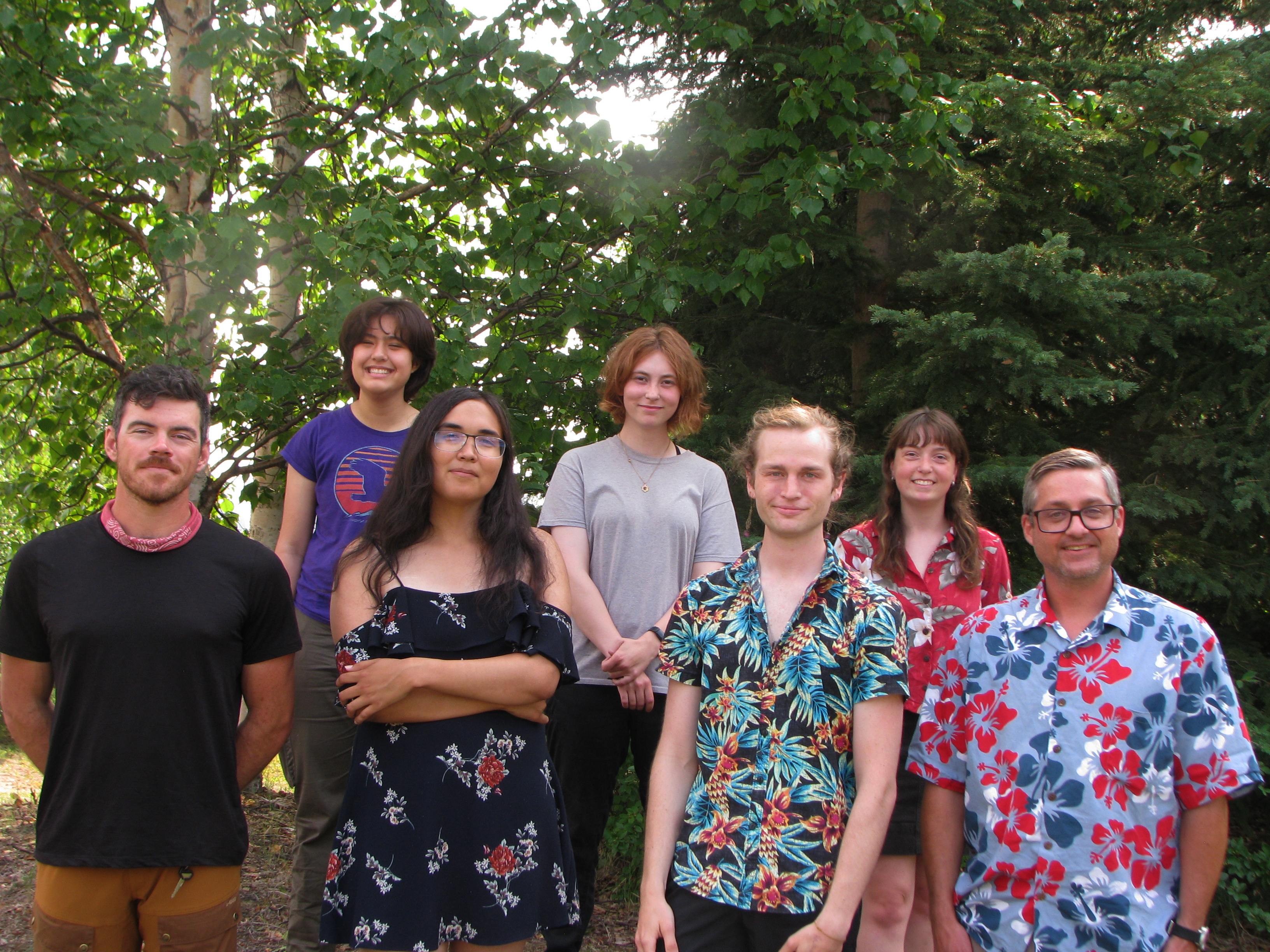UAF geoscience students take to the Bering Sea
Lea Gardine
907-474-7541
Aug. 2, 2023

UAF geoscience students bound for the Bering Sea on the research vessel Sikuliaq include, at front from left, Jim Costigan, Sarah Andreanoff, Ryan Oeste and Josh Barna, and, at back from left, Xochitl Muñoz, Wil Kleiner and Sara Datson.
Seven University of Alaska Fairbanks students will set sail on the research vessel Sikuliaq in August to study the plants, animals and humans that inhabited the Bering Land Bridge during the last ice age.
This is the first time that undergraduate geology students have participated in a research cruise aboard the Sikuliaq, which is owned by the National Science Foundation and operated by UAF. The student team consists of graduate students Josh Barna, Sara Datson and Ryan Oeste, and undergraduates Sarah Andreanoff, Jim Costigan, Wil Kleiner and Xochitl Muñoz.
The NSF-funded project will collect marine sediments and microfossils deposited in lakes, ponds or bogs that were above sea level on the Bering Land Bridge during the last ice age. The researchers will employ a gravity corer, a weighted tube that falls through the water and uses gravity to push it into the sediment. In a few places, they will also employ a vibracorer, which uses a high-frequency vibration to drive the sampling device into the sediment about 10 meters below the seafloor.
By examining these cores, they hope to reconstruct the vegetation and climate of the Bering Land Bridge. Results will also shed light on the resources available to human inhabitants and the challenges they faced during and after the last ice age as sea level rose and the land bridge was submerged.
“I was still in high school, researching colleges, when I saw Sikuliaq on UAF's website. I immediately felt drawn to it,” said Kleiner. “I was determined to get on Sikuliaq no matter what — for the experience of the ship, the science, the Bering Sea.”
Kleiner is a junior majoring in geophysics and minoring in ethnobotany and math, but
he’s unsure how he wants to apply his degree. He hopes this trip will help determine
his future career.
“I'm looking forward to this hands-on experience with science, and also to meet researchers from a variety of fields and learn about their work — maybe it's something I'm interested in,” he said.
The students will join UAF professor Sarah Fowell’s team of researchers from UAF and the U.S. Geological Survey in collecting the sediment cores. The team includes Beth Caissie, from the UAF Department of Geology and Geophysics’ class of 2003, who now works for the USGS.
Field data collection is often the most exciting phase of a research project, since it is the time when new discoveries are made.
“As one of the first expeditions designed to obtain sediment deposited on the Bering Land Bridge when it was above sea level, we will be operating on a scientific frontier,” Fowell said. “I am thrilled that students will be able to experience life aboard a research ship and the anticipation of opening a newly retrieved core. I hope it will encourage them to remain engaged and involved during subsequent laboratory analyses at UAF.”
“We are going to find things we don’t expect, and we are going to greatly advance our understanding of the flora and fauna of the lowlands that connected Asia and North America during the last ice age. Students will have a front row seat,” said Fowell.
Members of the public can follow along with the expedition on social media and via email.
ADDITIONAL CONTACTS: Sarah Fowell, 907-474-7810, sjfowell@alaska.edu; Wil Kleiner, 520-275-1205, wnkleiner@alaska.edu; Beth Caissie, 413-824-2388, bcaissie@usgs.gov
NOTE TO EDITORS: NSF will host a ship-to-shore livestream event, “Live from the Arctic: Unearthing the Bering Land Bridge,” on Aug. 24 at noon AKDT. Details and registration are now closed for this event.
016-24


